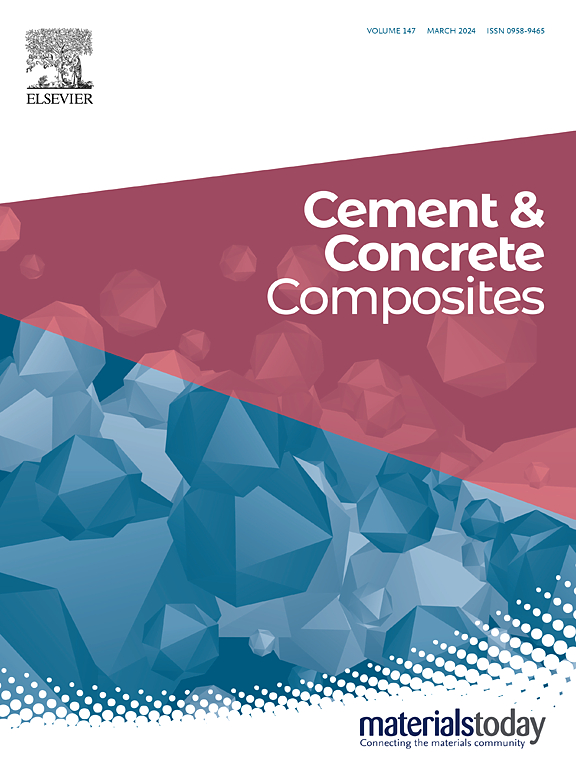机械活化下碱活化海相粘土的反应动力学及热力学模型
IF 13.1
1区 工程技术
Q1 CONSTRUCTION & BUILDING TECHNOLOGY
引用次数: 0
摘要
以煅烧的海洋粘土(CMC)和Ca(OH)2 (CH)为原料,研制了一种无熟料的单组分碱活性材料(AAM)。探讨了机械活化对单组分AAM的力学性能、形貌和微观结构的影响。化学溶解试验阐明了反应过程中SiO2/Al2O3含量、CH含量和pH值之间的关系。利用这些实验和统计分析结果,通过热力学建模对碱活化过程动力学和铣削对单组分AAM的影响进行了新的定量研究。通过实验和模型平衡比较,揭示了甲烷溶解控制的反应动力学。结果表明,CMC和CH的共磨通过加速CH和CMC的溶解,协同提高反应产物中CaO、SiO2和Al2O3的含量,有利于碱活化。本研究通过实验和建模方法优化前驱体/活化剂含量和机械活化时间,促进了对单组分AAM设计的理解。本文章由计算机程序翻译,如有差异,请以英文原文为准。
Reaction kinetics and thermodynamic modeling of alkali-activated calcined marine clay with mechanical activation
A clinker-free, one-part alkali-activated materials (AAM) using calcined marine clay (CMC) and Ca(OH)2 (CH) was developed in this study. The influence of mechanical activation on the mechanical properties, morphology, and the microstructure of one-part AAM was explored. Chemical dissolution test elucidates the relationship between reacted SiO2/Al2O3 content, CH content, and pH values throughout the reaction process. Leveraging these experimental and statistical analysis results, a novel quantitative study on the kinetics of alkali activation process and the impact of milling on one-part AAM was conducted through thermodynamic modeling. CH dissolution-controlled reaction kinetics was revealed through experimental and modeling equilibrium comparisons. It demonstrates that the co-milling of CMC and CH can facilitate the alkali activation by synergistically improving the reacted CaO, SiO2, and Al2O3 content via accelerated dissolution of CH and CMC. This research advances understanding for one-part AAM design by optimization of precursor/activator content and mechanical activation time via experimental and modeling approaches.
求助全文
通过发布文献求助,成功后即可免费获取论文全文。
去求助
来源期刊

Cement & concrete composites
工程技术-材料科学:复合
CiteScore
18.70
自引率
11.40%
发文量
459
审稿时长
65 days
期刊介绍:
Cement & concrete composites focuses on advancements in cement-concrete composite technology and the production, use, and performance of cement-based construction materials. It covers a wide range of materials, including fiber-reinforced composites, polymer composites, ferrocement, and those incorporating special aggregates or waste materials. Major themes include microstructure, material properties, testing, durability, mechanics, modeling, design, fabrication, and practical applications. The journal welcomes papers on structural behavior, field studies, repair and maintenance, serviceability, and sustainability. It aims to enhance understanding, provide a platform for unconventional materials, promote low-cost energy-saving materials, and bridge the gap between materials science, engineering, and construction. Special issues on emerging topics are also published to encourage collaboration between materials scientists, engineers, designers, and fabricators.
 求助内容:
求助内容: 应助结果提醒方式:
应助结果提醒方式:


